The Pad Art and Design Fair in Paris is always an occasion for surprises:
Last month, collectors, museums and visitors on our booth had the privilege to discover an unveiled, never seen before and unique piece by Studio BBPR.
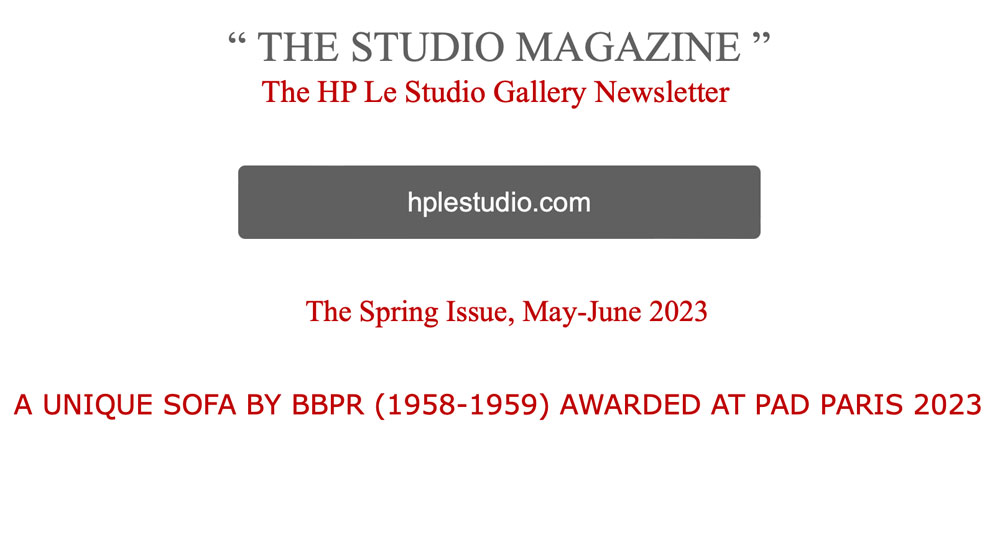
The Pad Art and Design Fair in Paris is always an occasion for surprises:
Last month, collectors, museums and visitors on our booth had the privilege to discover an unveiled, never seen before and unique piece by Studio BBPR.

Studio BBPR, unique sofa, private commission, 1959.
Photo Hervé Lewandowski.
At the 25th edition of PAD Paris, we presented for the first time a major discovery in Italian design history: the three seat version with removable table of the sofa created by BBPR in 1947. This unique version is a commission made in 1958-1959.
.
The Jury of the PAD Prize 2023, under the Presidency of Mr. Jacques Grange, awarded this piece the PAD Prize for Historical Design. We are very grateful for this recognition, and very proud as well.
.
Let’s begin with this remark: BBPR did not make much design for the industry, and commission pieces are more than rare. They are quite impossible to find, and we consider this sofa as a masterpiece in the field of seating.
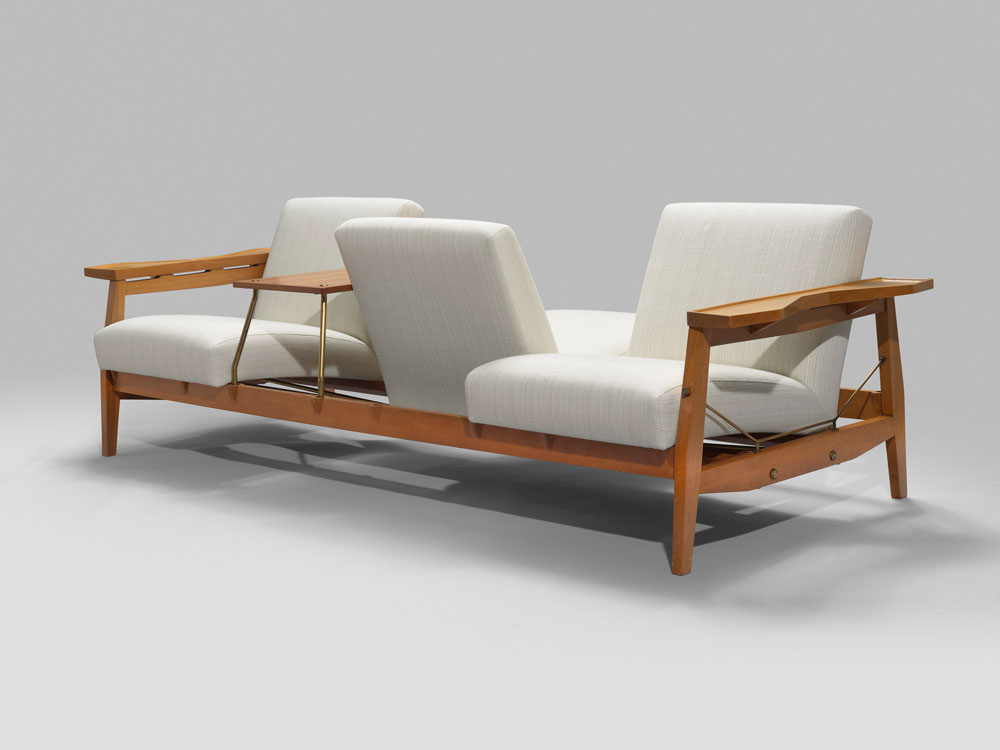
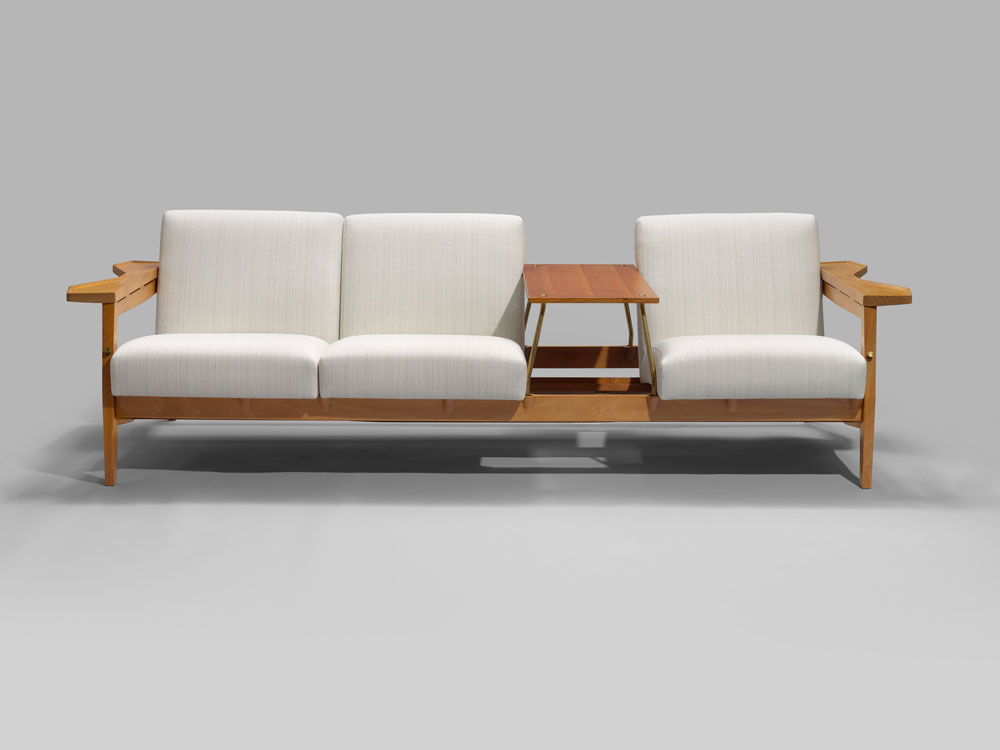
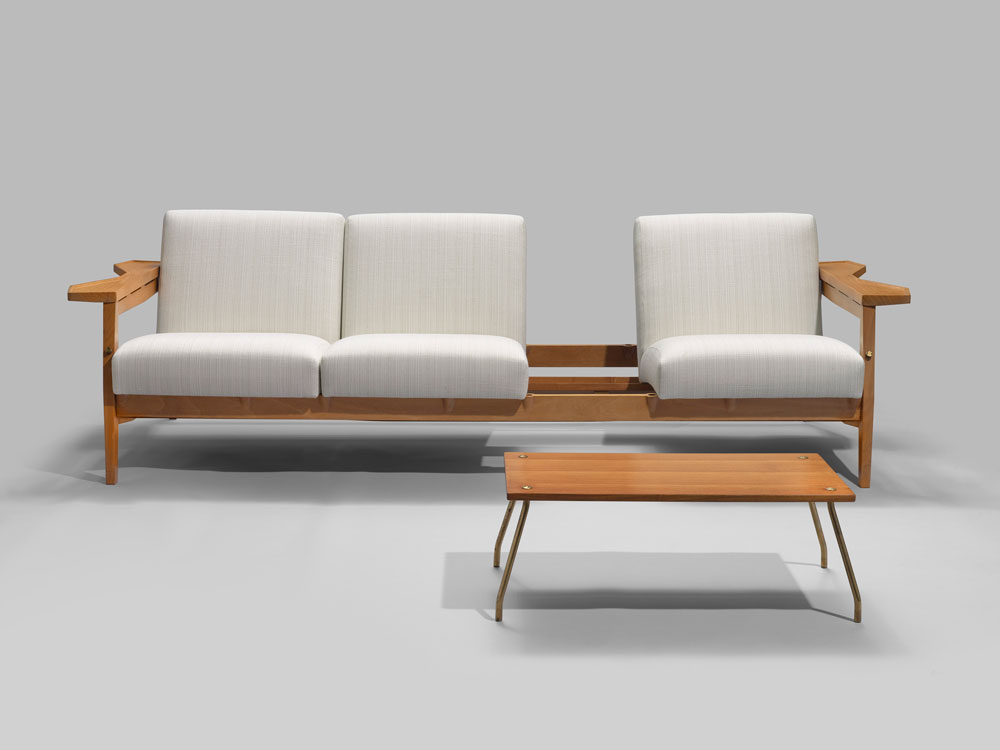
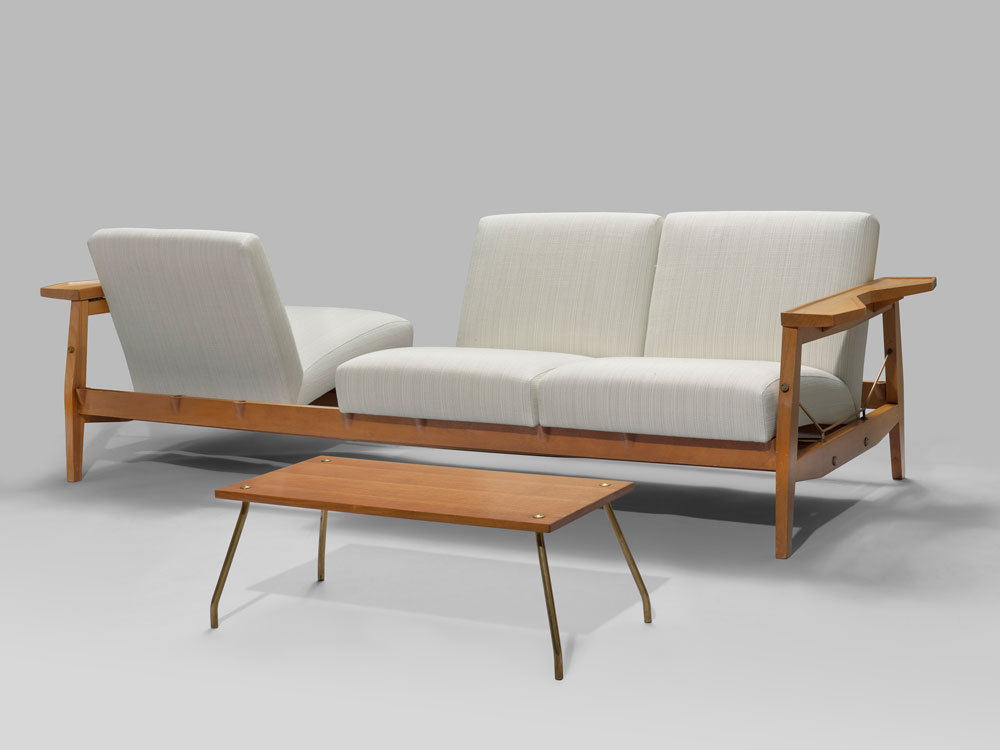
Studio BBPR, unique adjustable sofa 1958-1959. Photo Hervé Lewandowski Copyright.
The original idea was – in these times of reconstruction – to create a small sofa that could be used for different functions in a tiny space: side by side or face to face sitting.
It was also, as Albini did for his Fiorenza bergère, an opportunity to give a second chance to an old typology, the causeuse from the XVIIIth and XIXth centuries, by making it a lighter, modular and adjustable version, with new possibilities of use.
Instead of the round and heavy construction of the causeuse, BBPR made a clever, very simple horizontal design which offers many more possibilities, among them the use of a little table. Therefore we can assume that BBPR invented a new typology for modern living, very far from the old type.
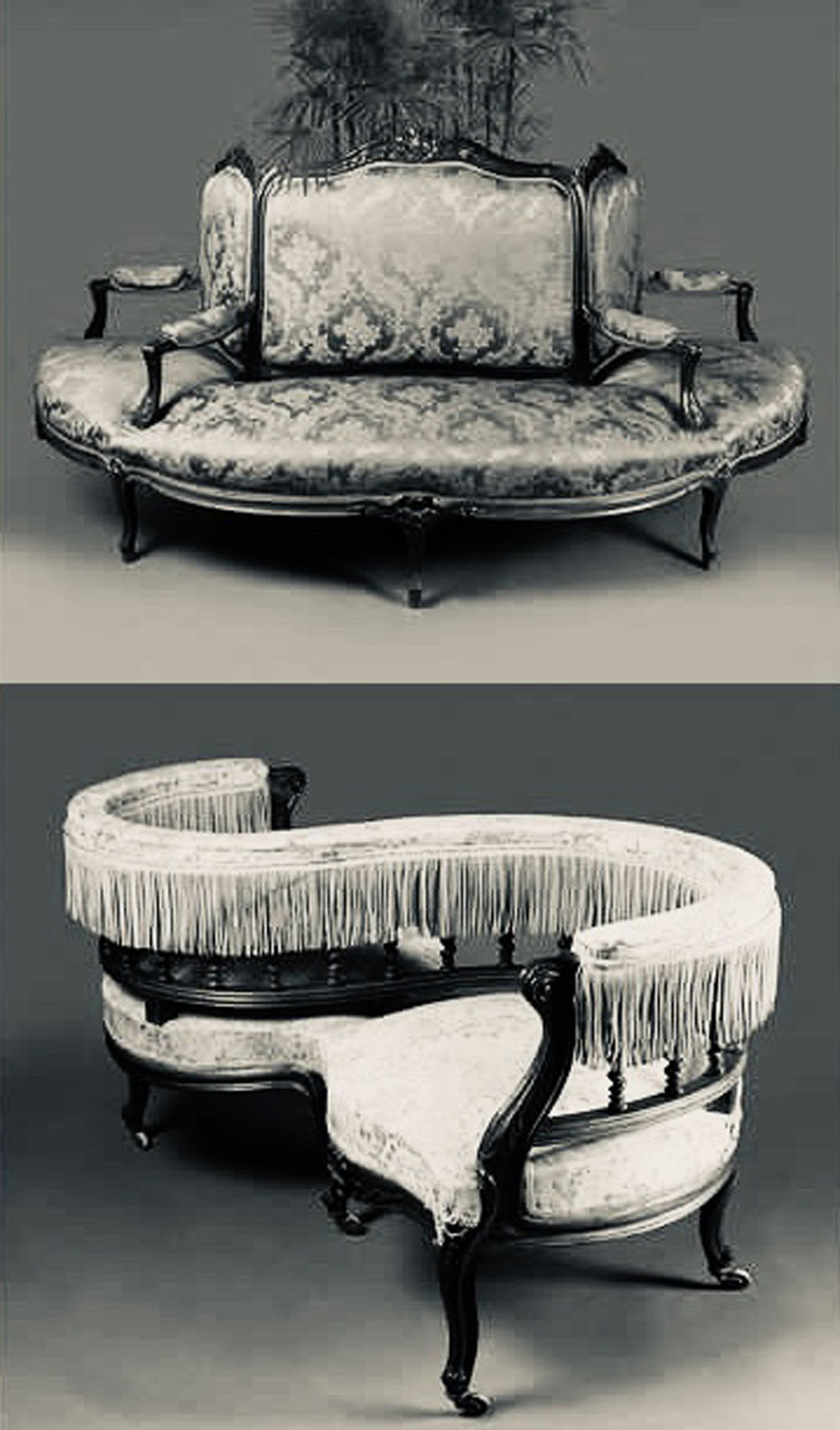
The XIXth century “causeuse”. Private Archive.
Our sofa is the result of an evolution from the initial idea, a little sofa addressing the need for “Existenzminimum” furniture, with two reversible seats and no table, in 1947. Then a new version in 1950, with a little removable table and, in 1958, a bespoke version with two seats, a table and a lighter construction for the Casa Ravelli in Milan.
Our version is the only one with three seats, a table and an addition of brass fittings in order to adjust the tensions due to the length of this piece (1958-1959).
Plates

The first version (1947) made for the Reconstruction, two seats, no table, but very large arms at each corners.
Domus Archives.
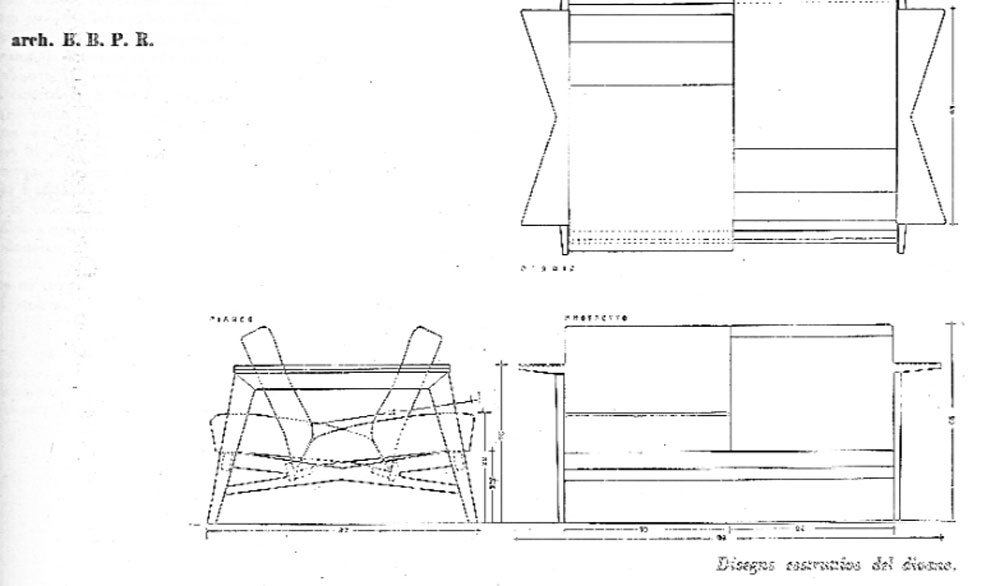
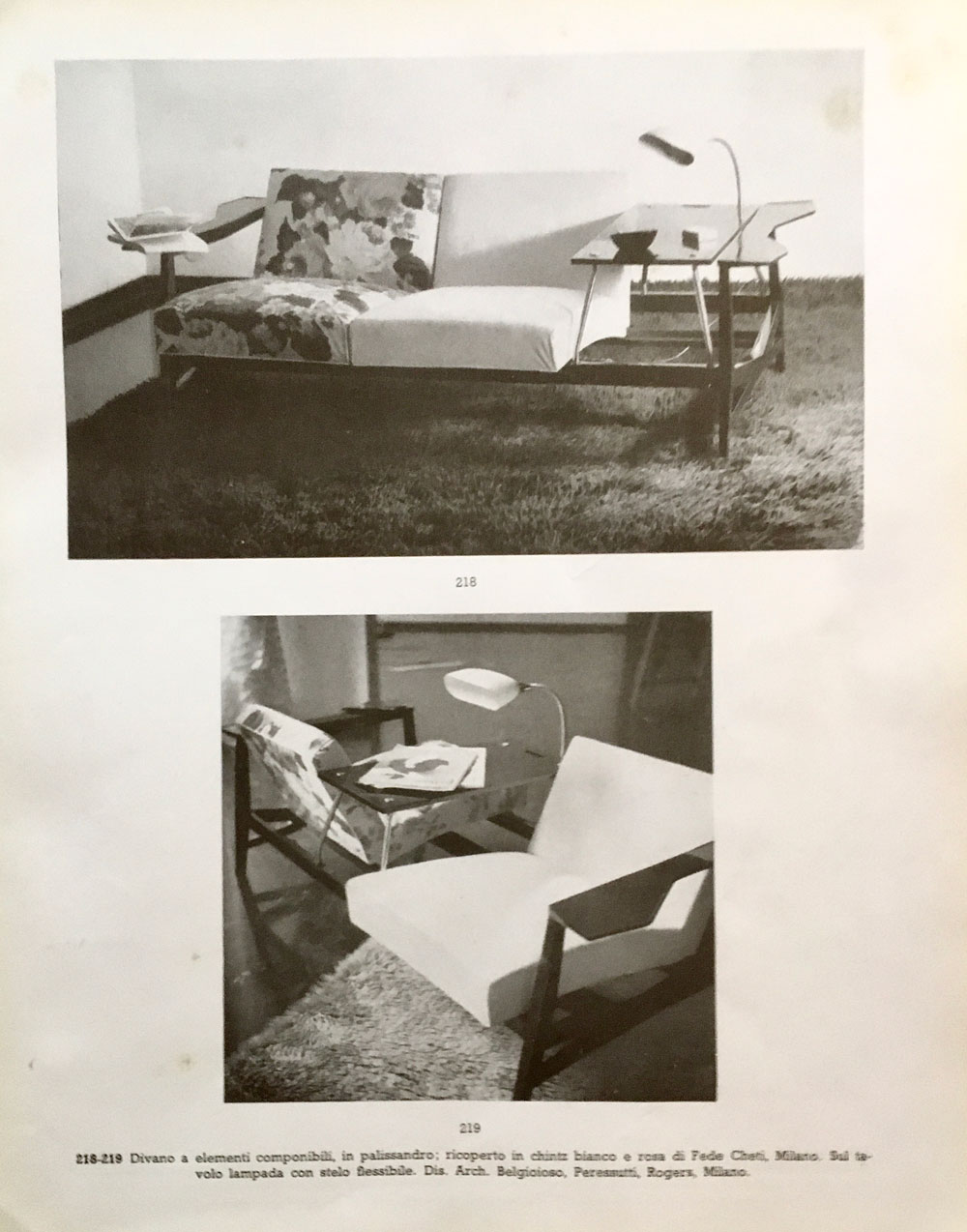
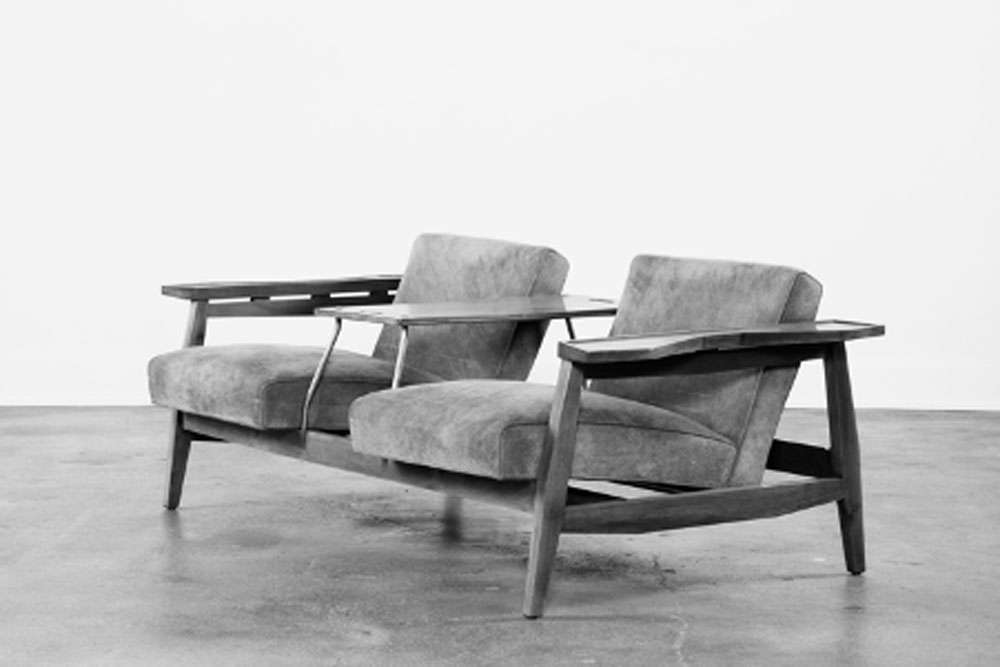
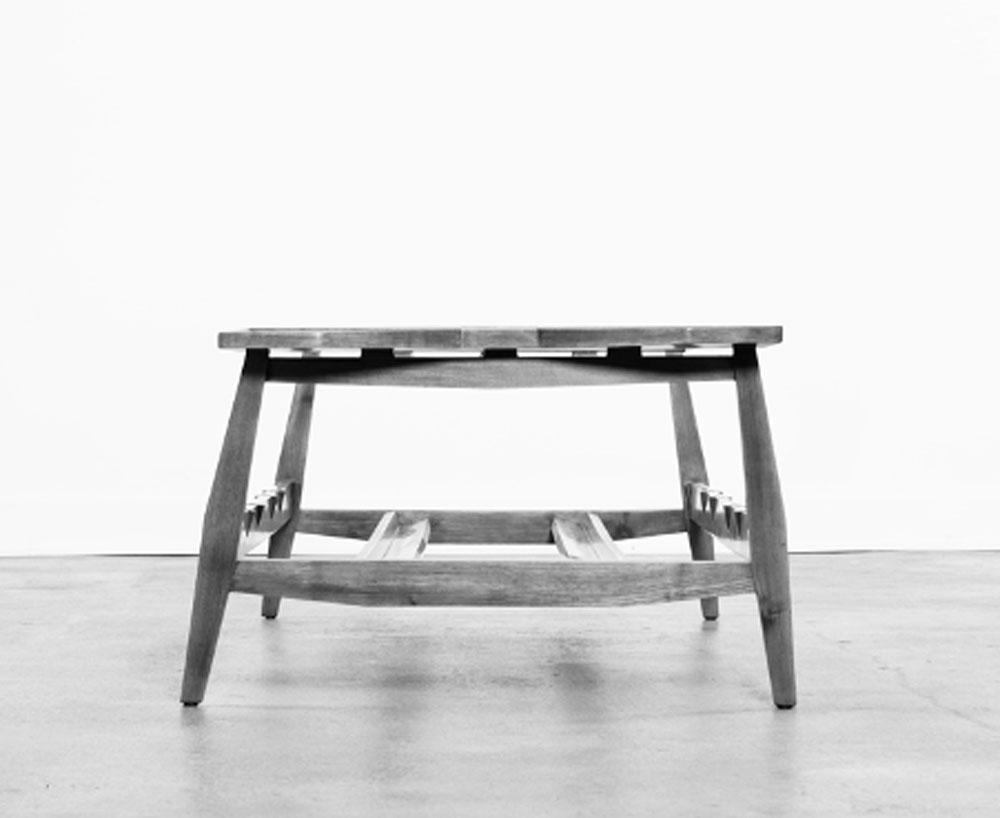
Our version embodies the achievement of a process, and certainly is the most elegant one. It is also, technically, the most sophisticated version, which makes this sofa one of the most important and interesting seating of the modern era, and one of the masterpieces of the so-called “Neo-Liberty Style”, which is nothing more than the postwar continuation of the modern movement in Italy, and never was a ”style” nor a “revival”, considering the variety of proposals by the neo-rationalist Italian architects in the fifties and their specificities. But certainly this piece can be seen as the result of their detachment from the old dogmas of the International Style.
.
This museum quality piece is now available from us at the gallery.
About the Studio BBPR and “Neoliberty”
Ernesto Nathan Rogers was with the BBPR group at the head of one of the more important theoretical and critical work about postwar international architecture dominated after 1945 by the confusion between Modernity and the American so-called International Style.
BBPR and the survivors from fascism and war (the neo-rationalists) invented the concept of Modern Tradition as a continuum from the apparition of Modernity during the second part of the 19th century until their time.
The inclusion of the “genius loci” in their priorities with the respect for the historical preexistent urban environment is one of their more pertinent contribution.
Modernity seen as a living tradition in a constant evolution and the architecture realized by BBPR such as the Torre Velasca in Milan (1957) were an important update for the Modern Movement in Italy even if it became a source of conflict with the architects and critics involved in the International Style.
In any case the work of BBPR at the lead of what we may call “critical rationalism” or Neo-rationalism cannot be assimilated to a “retreat”(1) from the Modern Movement but , much to the contrary, was the condition of the liveliness of the modern spirit in Italian architecture and design.
The last leaders of the frozen International Style may have mocked the Italian way by calling it “Neo-Liberty style”, no one today – except Wikipedia – still takes as anything serious this polemical and deceptive nickname…
(1) See Reyner Banham’s attack after the Torre Velasca construction in Milan, Neoliberty: the Italian retreat from the modern Movement, Architectural review, April 1959.

HP LE STUDIO
1, rue Allent
75007 Paris
FRANCE
.
.
Elisabeth Hervé
+33 (0)6 09 80 43 40
.
Marc-Antoine Patissier
+33 (0)6 03 12 55 60
.
Du mardi au vendredi, de 14h30 à 18h30
.